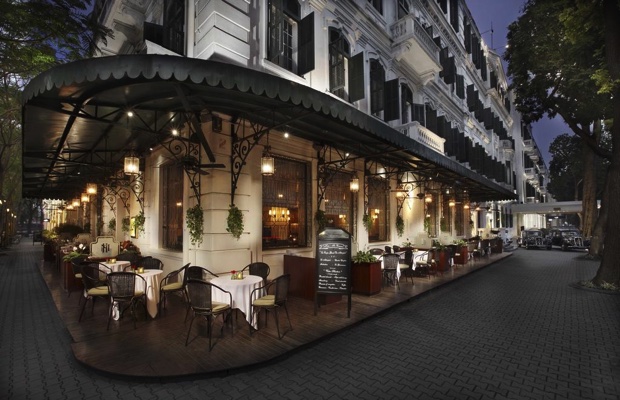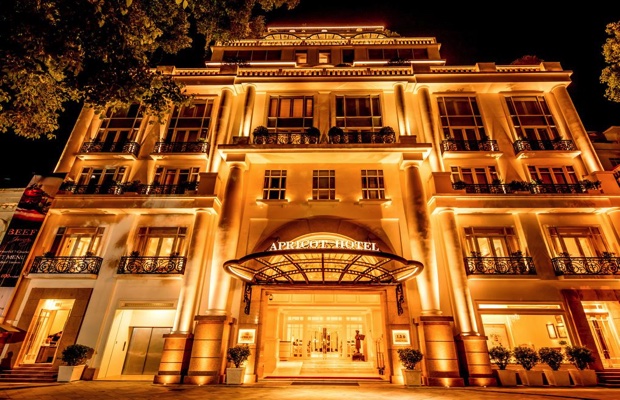Hoa Lo Prison Memorial
Hoa Lo Prison Memorial
Vietnam
Hanoi
Hanoi Travel Guide
Book Tour & Activities
Your tour in Hanoi.
Book your stay
Your hotel in Hanoi.
Overview
This thought-provoking site is all that remains of the former Hoa Lo Prison, ironically nicknamed the ‘Hanoi Hilton’ by US prisoners of war (POWs) during the American War. Most exhibits relate to the prison’s use up to the mid-1950s, focusing on the Vietnamese struggle for independence from France. A gruesome relic is the ominous French guillotine, used to behead Vietnamese revolutionaries. There are also displays focusing on the American pilots who were incarcerated at Hoa Lo during the American War.
Hoa Lo Prison was a prison used by the French colonists in French Indochina for political prisoners, and later by North Vietnam for U.S. prisoners of war during the Vietnam War. During this later period it was known to American POWs as the Hanoi Hilton. The prison was demolished during the 1990s, although the gatehouse remains as a museum.
These pilots include Pete Peterson (the first US ambassador to a unified Vietnam in 1995) and Senator John McCain (the Republican nominee for the US presidency in 2008). McCain’s flight suit is displayed, along with a photograph of Hanoi locals rescuing him from Truc Bach Lake after being shot down in 1967.
The vast prison complex was built by the French in 1896. Originally intended to house around 450 inmates, records indicate that by the 1930s there were close to 2000 prisoners. Hoa Lo was never a very successful prison, and hundreds escaped its walls over the years – many squeezing out through sewer grates.
Polyglots might notice that the French signs are watered down compared with the English equivalents.
French era
The name Hỏa Lò, commonly translated as "fiery furnace" or even "Hell's hole", also means "stove". The name originated from the street name phố Hỏa Lò, due to the concentration of stores selling wood stoves and coal-fire stoves along the street in pre-colonial times.
The prison was built in Hanoi by the French, in dates ranging from 1886–1889 to 1898 to 1901, when Vietnam was still part of French Indochina. The French called the prison Maison Centrale, 'Central House', which is still the designation of prisons for dangerous or long sentence detainees in France. It was located near Hanoi's French Quarter. It was intended to hold Vietnamese prisoners, particularly political prisoners agitating for independence who were often subject to torture and execution. A 1913 renovation expanded its capacity from 460 inmates to 600. It was nevertheless often overcrowded, holding some 730 prisoners on a given day in 1916, a figure which rose to 895 in 1922 and 1,430 in 1933. By 1954 it held more than 2000 people; with its inmates held in subhuman conditions, it had become a symbol of colonialist exploitation and of the bitterness of the Vietnamese towards the French.
The central urban location of the prison also became part of its early character. During the 1910s through 1930s, street peddlers made an occupation of passing outside messages in through the jail's windows and tossing tobacco and opium over the walls; letters and packets would be thrown out to the street in the opposite direction. Within the prison itself, communication and ideas passed. Many of the future leading figures in Communist North Vietnam spent time in Maison Centrale during the 1930s and 1940s.
Democratic Republic of Vietnam, 1954
Following the defeat at the Battle of Dien Bien Phu and the 1954 Geneva Accords the French left Hanoi and the prison came under the authority of the Democratic Republic of Vietnam. Thereafter the prison served as an education center for revolutionary doctrine and activity, and it was kept around after the French left to mark its historical significance to the North Vietnamese.
Hoa Lo Prison
- Address: 1 Hoả Lò, Trần Hưng Đạo, Hoàn Kiếm, Hà Nội 100000, Vietnam
- Opening Hours: 8:00 AM - 5:00 PM
- Opened: 1896
- Phone: +84 24 3934 2253
Video Travel Inspiration
See Hoa Lo Prison Memorial on Map
Most Popular Cities

Siem Reap
Cambodia
Ho Chi Minh City
Vietnam
Beijing
China
Paris
France
London
United Kingdom
New York
USA
Tokyo
Japan
Bangkok
Thailand
Seoul
South Korea
Vientiane
Laos
Yangon
Myanmar
Washington DC
USA
Los Angeles
USA
Ottawa
Canada
New Delhi
India
Singapore
Singapore
Kuala Lumpur
Malaysia
 English
English French
French Khmer
Khmer Thai
Thai Vietnamese
Vietnamese Chinese
Chinese Korean
Korean German
German Japanese
Japanese Italian
Italian Russian
Russian Spanish
Spanish Dutch
Dutch Indonesian
Indonesian Malay
Malay


































